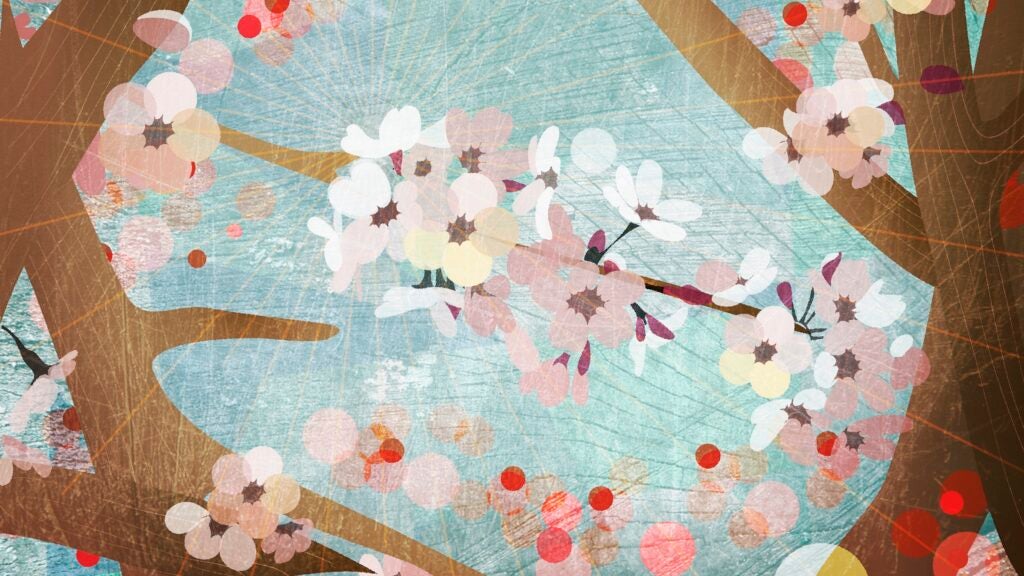There is another, more practical appeal to forest burials: the cost. In crowded, urbanized Japan, with its inverted age pyramid, the cost of paying annual fees to keep one’s parents, grandparents, and great-grandparents (and so on) from being relocated to a mass grave has become unaffordable for many people, writes Boret. The same is true in nearly every wealthy country, even in those that grant the dead “perpetual tenure” over their graves. The cost of a traditional burial in the United States, including a casket and embalming, is estimated to be around $20,000. Facing this sticker shock, the majority of people in the U.S., Canada, the U.K., and Germany are now opting for cremation instead of burial, which typically costs somewhere around $2,000. Where these ashes end up is not well documented. Some are spread in wild landscapes, like the ocean or the mountains; some are kept in fancy urns atop mantelpieces; and some are simply placed in people’s attics or basements next to the cardboard boxes of old photographs and childhood trophies. (A writer for the Times of London recently admitted that her mother’s ashes reside in a cardboard tube in her office.) A shocking percentage are never picked up from the crematorium at all.
Forest cemeteries provide the best of both worlds: they are affordable (they typically only cost a few thousand dollars, with no recurring fees) and they provide a formal resting place. This rationale is powerful enough to sway even the most nature-averse urbanite. One German woman, who chose a forest burial for her husband, explained her steely logic this way, “The advantage is that there are no subsequent costs and I don’t have to tend the grave.”
Still, the forest burial movement faces stiff challenges, both legal and financial. I recently visited Walawaani Way, an old dairy farm in New South Wales, Australia, that is being converted into a forest cemetery by a woman named Fiona McCuaig. We wandered through her property—a hilltop covered in lush grass beside an aromatic eucalypt forest—one sunny summer day. McCuaig hopes to one day fully rewild this land, creating a habitat for yellow-bellied gliders and koalas. She will also ban plastic flowers and other non-organic objects from the grave sites. Most cemeteries are “dead places,” she said; she wants hers to be bursting with life.
McCuaig told me she was inspired to open a forest cemetery on her family’s land after seeing a documentary about the ecological horrors of how bodies are typically buried. In most Western countries, corpses are injected with formaldehyde, a known carcinogen, then placed within caskets with plastic linings and rubber gaskets, which, rather than allowing the body to break down naturally, seal in moisture and microbes, so the body slowly liquefies into what one expert calls a “human soup.” When the plastic liner finally degrades, that soup—formaldehyde and all—then leaches into the soil.
To McCuaig, a lifelong eco-activist—amid other campaigns, she spent six months living in Antarctica fighting Japanese whaling ships with Sea Shepherd—this system was clearly in need of reform. She loved the idea of combining nature conservation with natural burials. The hard part was deciding which kind of natural burials to choose. Should the bodies be cremated, buried, or composted? Each option, it turns out, has its downsides.
The problem with cremation is that cremains—the industry term for human ashes—are laced with a number of heavy metals (including, in some cases, mercury from dental fillings) and a hefty dose of salts. They are also highly alkaline; I was told they have roughly the same pH as bleach. All of this can radically inhibit plant growth. “What happens is that the tree will grow around the ashes to survive,” says Warren Roberts, the founder of the first forest cemetery in Australia, Living Legacy Forests. His team has solved this problem by devising a patented formula —a bright blue liquid—that, when poured over the ashes, neutralizes the alkalinity and reduces the sodium content, ensuring that the body actually begins to feed the roots of the tree rather than killing them. (In the U.S., a roughly similar product, called Let Your Love Grow, can be purchased online.)
McCuaig is open to this method, but because of the carbon emissions involved in cremation, she would prefer to avoid burning bodies at all. She intends for mourners to bring the deceased to a special room on her property so that they can wash and prepare the body—possibly over the course of multiple days, which was once the tradition in many cultures—before placing it directly into the soil wrapped in a simple cotton shroud or a plain pine box. The obvious problem with this option is that it’s logistically cumbersome and, if done incorrectly, dangerous. A human corpse contains a host of pathogens that, if not buried correctly—placed too close to the surface, for example, or too close to a nearby waterway—can proliferate long after we have died.
A third compelling option McCuaig is considering is “human composting,” wherein the body is placed inside a special capsule and converted into soil. One major catch with this practice, she said, is that it is quite expensive; a composting device like the one sold by Recompose, a company based in Washington State, would cost her about one million Australian dollars. She recognizes that some people might find the idea of composting their bodies off-putting, since it is associated with food waste. There’s also one other tiny issue, which is that in Australia, as in most parts of the U.S., composting a human body is currently illegal.
Talking with McCuaig, I began to realize why forest burials haven’t caught on faster. Both the costs and the bureaucratic hassle of creating a forest cemetery are staggering: McCuaig has already spent nine years and hundreds of thousands of dollars, and her property still isn’t quite ready to begin accepting burials. One reason the funeral industry is so heavily regulated is that the government wants to deter people from opening new cemeteries only to go bankrupt a few years later, forcing the new occupants to relocate the bodies. However, one upside to all this red tape is that once a forest cemetery is established, it seldom closes down. And in many places, even if the cemetery goes out of business and the land is sold off one day, the dead are legally granted “perpetual tenure” over their plots, meaning that they own their little sliver of earth forever. McCuaig told me that her mother often worries about the financial implications of these laws, because it makes cemetery land incredibly difficult to resell. “And I’m like, ‘That’s the point!’” McCuaig said. “I like it because it does lock up the land.”
Decades from now, McCuaig hopes her land will look something like the forest cemeteries—known as Traumwald, or “dream forests”—that the bestselling author Peter Wohlleben has established in Germany. I went walking through one of those dream forests one autumn with Wohlleben’s adult son, Tobias, who helps manage it. Each of the graves—up to ten of which can surround a single tree—was marked only with a discreet metal tag on the tree’s trunk. My feet shuffling through a papery mess of fallen leaves, I was struck by the fact that if I’d wandered blindly onto this land, I never would have guessed it was a cemetery. Tobias said that was the whole idea. “We don’t want people to say, ‘Oh, that’s a funeral forest.’” he said. “We want them to come out to the forest, and they won’t see anything.”
As we walked deeper into the shady, gently swaying beechwood, I asked Tobias if his clients ever expressed concerns about their tree dying—especially now, in this time of intensifying climate chaos. It seemed to me that if we had buried our Meemaw beneath a beech tree, and then that tree died the following year, it would have been like losing her all over again.
Tobias said his clients don’t typically worry about that, and if they do, their anxieties are easily put to rest. A dead tree, after all, will simply be reabsorbed into the larger ecology of the forest.
“It’s a part of life,” he shrugged. “In one hundred years, there will be another tree. It doesn’t end with death.”






